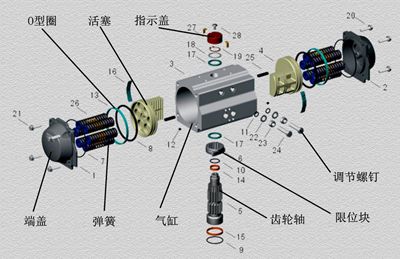
How to determine if the cylinder has malfunctioned?
Cylinders play a crucial role in industrial production, and determining whether a cylinder has malfunctioned can be approached from the following aspects:
1、 Appearance inspection
Check whether there are obvious scratches, deformations, or corrosion on the surface of the cylinder. If the surface of the cylinder is damaged, it may affect its sealing and normal operation.
Check the connection parts of the cylinder, including the connection between the piston rod and the piston, the connection between the cylinder and the mounting bracket, etc. Loose connections may cause unstable cylinder operation or leakage.
2、 Action check
Observe whether the cylinder operates smoothly. Under normal circumstances, the piston rod of the cylinder should be able to extend and retract smoothly without any jamming or jumping phenomenon. If the movement is not smooth, it may be due to internal component wear, poor lubrication, or foreign objects entering the cylinder.
Check if the speed of the cylinder meets the requirements. If the speed of the cylinder is too fast or too slow, it may be caused by unstable air source pressure, faulty speed control valve, or internal cylinder leakage.
3、 Pressure check
Use a pressure gauge to measure the intake pressure and working pressure of the cylinder. If the intake pressure is insufficient, it may cause the cylinder to malfunction; If the working pressure is unstable or below the normal range, it may be caused by internal cylinder leaks, damaged seals, or air supply issues.
Perform a leak test by sealing the intake port of the cylinder and applying a certain force on the piston rod to observe if there is any leakage in the cylinder. If there is a leak, it may be caused by damaged seals, worn piston rods, or foreign objects inside the cylinder.
4、 Sound inspection
Listen to the sound of the cylinder working. Under normal circumstances, there should only be slight airflow and mechanical movement sounds when the cylinder is working. If abnormal noise is heard, such as impact sound, friction sound, or leakage sound, it may be caused by damage to internal parts of the cylinder, poor lubrication, or foreign objects entering the cylinder.
Tools such as stethoscopes can be used to more accurately determine the abnormal sound of cylinders.
5、 Temperature check
Touch the surface of the cylinder and feel if its temperature is normal. If the surface temperature of the cylinder is too high, it may be caused by poor lubrication, overload operation, or damage to internal parts.
Using tools such as infrared thermometers can more accurately measure the temperature of the cylinder.
By checking the above aspects, it can be preliminarily determined whether the cylinder has malfunctioned. If a cylinder malfunction is found, it should be repaired or replaced in a timely manner to ensure the normal operation of the production equipment.

